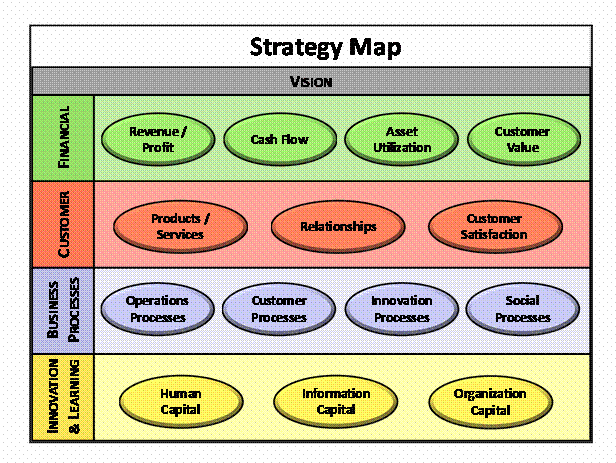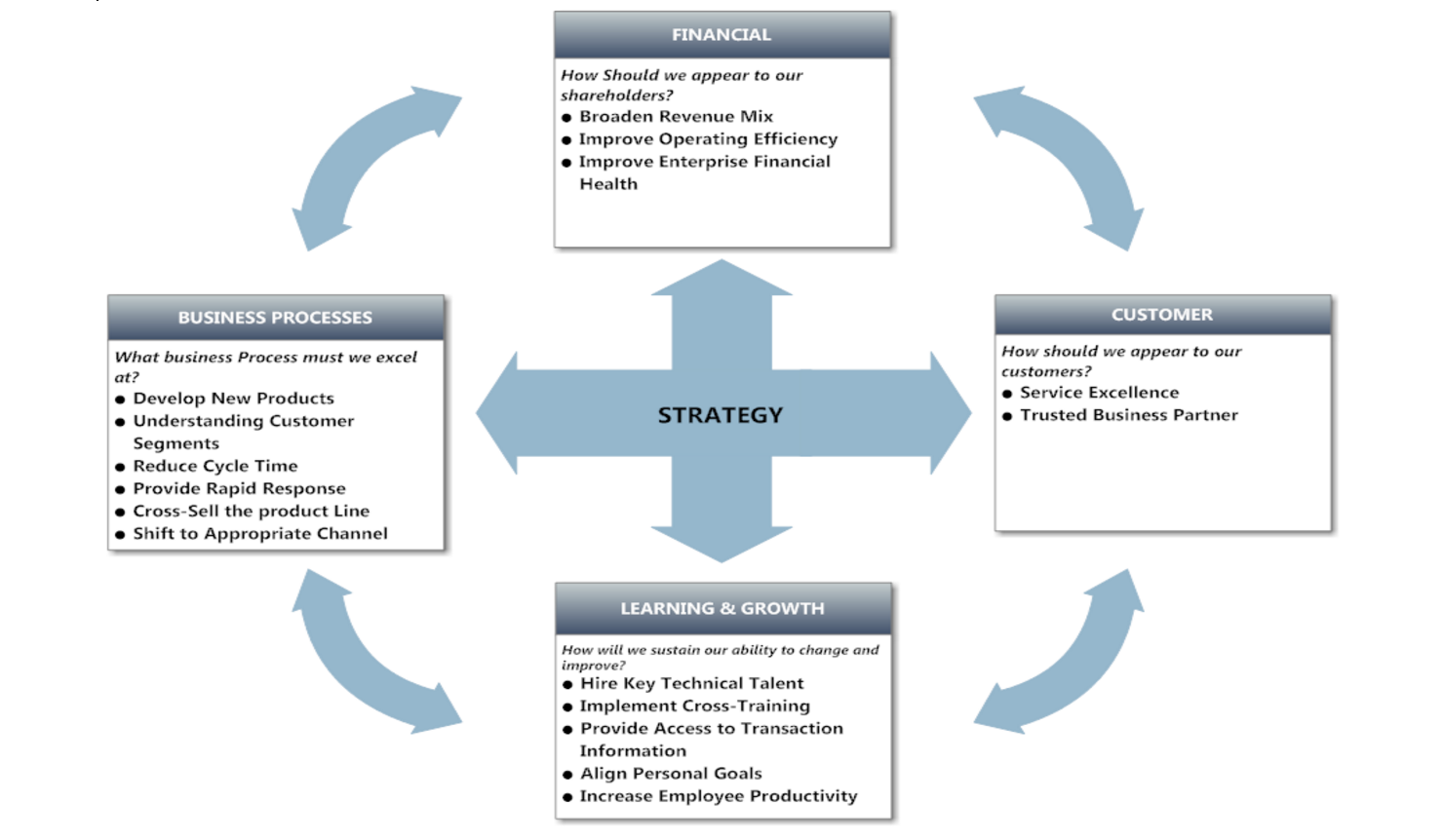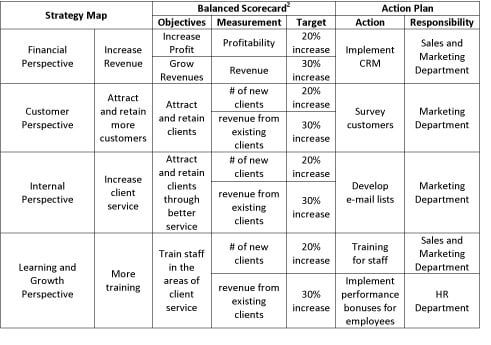
Using Balanced Scorecards to Implement and Align Organizational Strategy
Does this sound like your company: In January 2009, our corporate leadership team sat in a week’s worth of meetings hashing out our strategy for the year. Our leadership team was composed of a group of very experienced C-level executives, each having held meaningful roles in other companies. We had years of industry experience, years of education, and a combined total of over 125 years of experience. We had all earned a seat at the table. When our week of reviewing last year’s numbers, planning for next year’s expansion and defining our corporate mission was over, we all left the conference room raring to go. But a week later, we were being pulled back into that black hole with no navigation system to help us turn the ship around.
Maybe we should have asked these 3 questions before our group disbanded.
- What happens after the annual strategic planning sessions?
- How do we get where we all agree we needed to go?
- And, how do we keep everyone on track?
What happens after the strategic planning session?
Without a strategic road map and a system to tie action items to corporate goals, most companies experience the following challenges as outlined by Larry Myler in a 2011 Forbes article, Strategy 101: It’s All About Alignment.
- 65% of organizations have an agreed-upon strategy
- 14% of employees understand the organization’s strategy
- Less than 10% of all organizations successfully execute the strategy
Myler also points out, “There is an often missing-component that, if consistently applied, will dramatically enhance the progression of strategy creation, communication and execution. That critical element is ALIGNMENT.”
How do we get where we all agreed we needed to go?
In 1992, David Norton, a well known business theorist, business executive and management consultant, along with Robert Kaplan, an accounting academic and Emeritus Professor of Leadership Development a
t the Harvard Business School, created what they called the Balanced Scorecard.
Although, there are numerous examples of Balanced Scorecards to choose from, they all have similar properties. Chris Rigatuso of the Lenskold Group defines the scorecard in two primary categories:
- Strategy Map View: which articulates the strategy in a series of linked objectives representing the most important priorities of the organization, and
- Scorecard View: which holds the specific measures, and targets that represent the yardstick and expected level of success as well as the strategic initiatives or action programs that are the ways to achieve the targets outside of current capabilities.

Although most corporate goal setting is tied directly to ROI, there are a number of factors that need to be put into place to make sure everyone in the corporation, from shareholders to line workers, understands their personal objectives. A typical balanced scorecard has 4 areas of strategic focus.
- Financial – what do my shareholders expect?
- Customer – what do my customers expect?
- Learning & Growth – what do our employees need to learn and improve on?
- Business Processes – which processes do I need to improve to satisfy the customer?

How do we keep everyone on track?
Before the use of today’s feature rich performance management platforms, data was recorded and updated by using some form of a spreadsheet. The goals associated with each of the strategic areas: Finance, Customer Satisfaction, Internal Business Processes, and Employee Learning and Growth were identified. Each department was given a percentage of the goals to be cascaded to their area of responsibility. Generally, the group reconvened quarterly to see if they were meeting the goals, missing them, or if they possibly no longer existed. Any number of things could have taken place to cause a company to make a directional shift, i.e. government regulations, increased competition, the need for greater product performance, or even change in leadership. Each can be seen as a cause or a leading indicator leaving the company to rethink their strategy.
Modifying the Balanced Scorecard was done by updating the spreadsheet with the new targets, objectives, measures and initiatives. This was the most efficient way to handle performance management change in 1992. A typical balanced scorecard, as developed by Kaplan and Norton, can be seen below.

In order to stay aligned and in concert with the overall corporate strategic initiatives, departments were often asked to shift direction quickly, and sometimes too late to make the necessary adjustments to meet financial goals, customers’ expectations, employee skills enhancement, product / processes improvement and effectively communicate it to those who were accountable for action items.
The key element that is missing from the model above is strategic communication to, and strategic alignment of, “all employees” in the organization. To do this, the scorecard has to become a performance management tool. Just as all bad things flow downhill so do the good things. Not until all action items cascade down to the operational guts of the business will everyone in the organization be working towards the same outcomes.
In the introduction pages of a 2008 white paper written and published by FSN Limited and Oracle Corporation, The Challenge of Strategic Alignment, the contributing authors could not have done a better job of highlighting why communication is so important….. and alignment so challenging.
“Executives spend days or weeks devising well-crafted strategies and then throw them “over the wall” to the rest of the company, hoping and praying that their vision will bear fruit.”
In today’s larger corporations, that wall can bear resemblance to The Great Wall of China. That’s 5,500 miles of missing information, confusion and disparity. So how do we connect the Executives to the Directors to the Managers to the Supervisors and everyone under them?
We do so by taking the scorecards we created in the annual planning session and mapping out how those action steps get broken down into smaller bites that get everyone involved and excited about the mission at hand. The FSN and Oracle white paper makes another common sense correlation between strategy and alignment:
“Strategy is completely useless unless the results of the strategy process, the position you choose to occupy, the way you are hoping to drive your company, is well understood, quite broadly. Because the number one purpose of strategy is alignment, it’s really to get all the people in the organization making good choices, reinforcing each other’s choices because everybody is pursuing a common value proposition, a common way of gaining competitive advantage.”
Communication has become so sophisticated that in anywhere in the world, a phone call, email, IM or through some other source of social media can be used to align us all. Think of this in the context of communication to your family. A few years ago, my husband’s family decided to hold a family reunion in Sacramento. The first message went out to everyone via Facebook, then personal emails were provided for further drill down on the dates, activities; then hotel accommodations were researched and sent out via Facebook. A block of rooms was set aside at a local hotel based on the number of traveling family members who committed to coming. Next of course, was getting a consensus on meal preferences. So we sent out questionnaires via email about food allergies, vegetarian versus meat, food selections due to illness, etc. Within a couple weeks, this 250-person family reunion was planned and published to everyone. The one connecting piece of fiber we had to keep us all aligned was the excitement of the reunion, who we’d see, what we’d share, and memories we’d create.
The same sense of excitement, or call to action should take place in the workplace as well. By using the scorecard technology to document, assign, communicate and track goals, we can have everyone working towards the same end results. Today’s workplaces use technology for everything. We track our leads and sales; we track the number of defects in our products, we track the metrics for production lines, we track our customer satisfaction, and of course it all leads us the the end result – tracking our profits. None of these mechanisms track progress on an annual basis. Each of the tracking measurements are used to realign constantly. When we see a bump in the road, we communicate a new map to get around the bumps, and continue on our quest without missing a beat.
Betsy Johnson, VP at Gap International had this to say about improving the connection and alignment between employees and leaders. “That has to do with the speed of execution. The more connected people are, the faster things get done.”
If your company is not currently aligning your employees to expected outcomes by using a performance management system, you should reconsider the importance of doing so. It doesn’t matter if your workforce is 50 or 50,000. It’s never too late to invest in tools that help you implement a performance process that can get everyone “running” in the same direction, everyone aligned with the same goal in mind. How else would you be able to win the race?
Share this article
